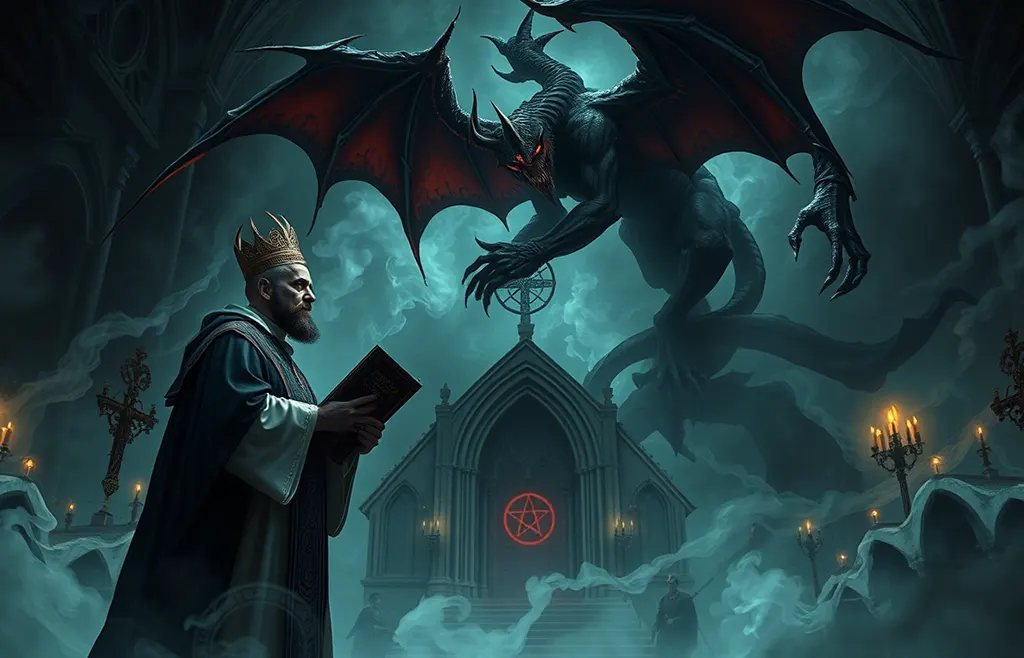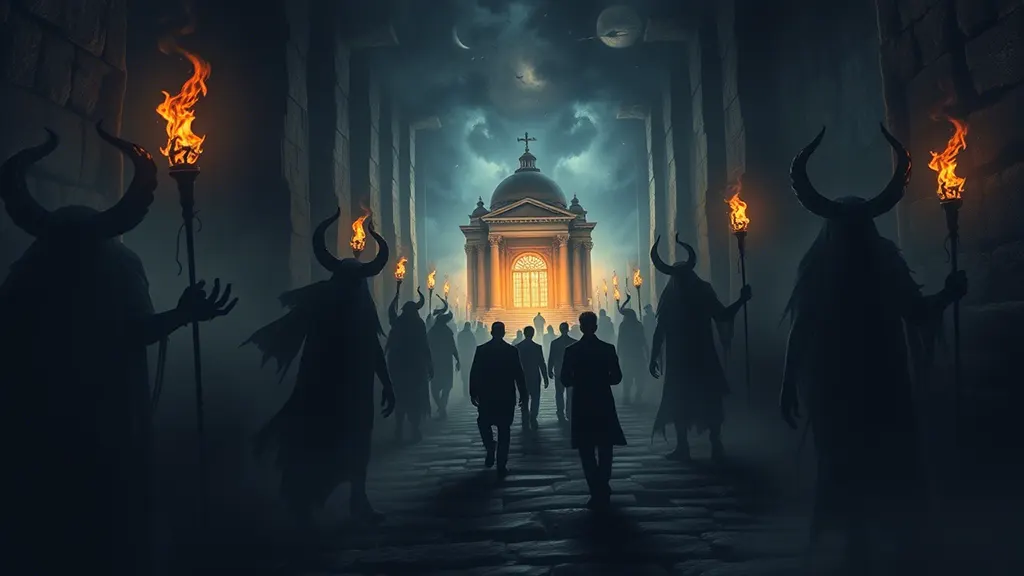Somewhere in the endless night of humanity, as a shroud of mist drapes over primeval forests, the question “Who gave birth to whom?” quietly echoes like the wind whistling through a door crack: Did religion create demons, or did those shadowy forces ignite the flame of faith? Like two sides of a reversed mirror, gods and demons always walk together-opposing, yet intertwined-composing an endless symphony of fear and hope.

Instinctively Trembling Before the Invisible
Long before church spires pierced the sky, humans shivered before invisible forces. This was a primal fear, a subterranean current in the psyche, urging people to seek explanations for thunder, plague, death, and all things beyond control. Psychologist Freud likened religion to an “illusion” created by the subconscious to cope with fear. Philosopher David Hume believed that uncertainty, hope, and anxiety sowed the seeds for ideas of invisible powers-from polytheism to monotheism, and eventually to metaphysical concepts like evil spirits.
It is in the intersection of “fear of the invisible,” “ancient survival instincts,” and “the longing to control destiny” that the first forms of demons appeared-as a shadow born alongside the light of the gods.
When Religion Paints a Face for Darkness
Major religious systems, from Zoroastrianism to Judaism, Christianity, and Islam, have “masked” evil, naming it as demons, evil spirits, or wandering souls. In ancient Persian mythology, the Daeva-once gods-were turned into demons when Zoroaster elevated Ahura Mazda as the supreme deity, casting Ahriman as the leader of all darkness. In Hinduism, demons are not just adversaries of the gods but an inseparable part of the universe, representing the darkness within both humans and the world.
In Judaism and Christianity, stories of fallen angels-Lucifer, the arrogant “morning star” cast into hell-have become powerful symbols of rebellion and corruption (Isaiah 14:12-15). These legends are more than mere “personifications of darkness”; they are ways for religion to organize, explain, and control communal fears.
Demons: Shadows Leading the Way to Faith
But if we turn back time to prehistoric tribes, we find that early beliefs began with fear of demons, spirits, and phantoms lurking in the deep woods or by the fireside. Many scholars argue that “ancient fear of demons” was the first catalyst, prompting humans to create rituals, charms, and eventually more organized religious systems.

I came across a 2020 YouGov survey — surprisingly revealing — showing that belief in demons and spirits is still deeply rooted: 66% of Protestants, 62% of Muslims, 60% of Mormons, and 58% of Catholics in the U.S. believe that demons truly exist. These numbers hit like a silent drumbeat — a reminder that the shadow of demons has never really vanished from humanity’s spiritual ecosystem, even in the age of data.
The Symphony of Light and Shadow
Whether it is “religion creating demons” through personification and doctrine, or “demons creating religion” through primal fear, both are sides of the same coin. In the Ramayana and Mahabharata, demons are not just enemies but challenges for humans to surpass themselves (Britannica). In the West, whenever a new culture rises, old gods are often “drowned” as demons-like Pan, Loki, Belial-evidence of the endless cycle between gods and demons, light and darkness.
Religion and demons, like underground rivers, flow through every culture and era. They oppose and complement each other, painting the multi-hued spiritual landscape of humanity.
Where Is the Beginning?
So, ultimately, who gave birth to whom? Is religion the mirror that gives shape to darkness, or are fears of demons the fertile soil from which faith grows? Perhaps the answer lies within each of us-in those moments of shivering before the night, or when we look up at the sky and whisper a prayer. The boundary between light and shadow, between the divine and the demonic, sometimes blurs in a mere blink of faith.
So, what do you think: If, one day, all fears vanished, would religion still need demons to survive?
